YuDash¶
The YuDash LYNX is a flexible Industrial IoT gateway that can read various industrial sensors/instrumentation over different protocols: Modbus RS485, analog inputs, Modbus TCP/IP, I2C sensors, and many more. Connectivity is via WiFi/Ethernet LAN or 4G/LTE. It supports HTTP POST and MQTT Publish to send data to eagle.io, and has a flexible payload format.

Source configuration¶
- Create a Data Source and select File as the Source Type. Choose Delimited Text from the list and click Next.
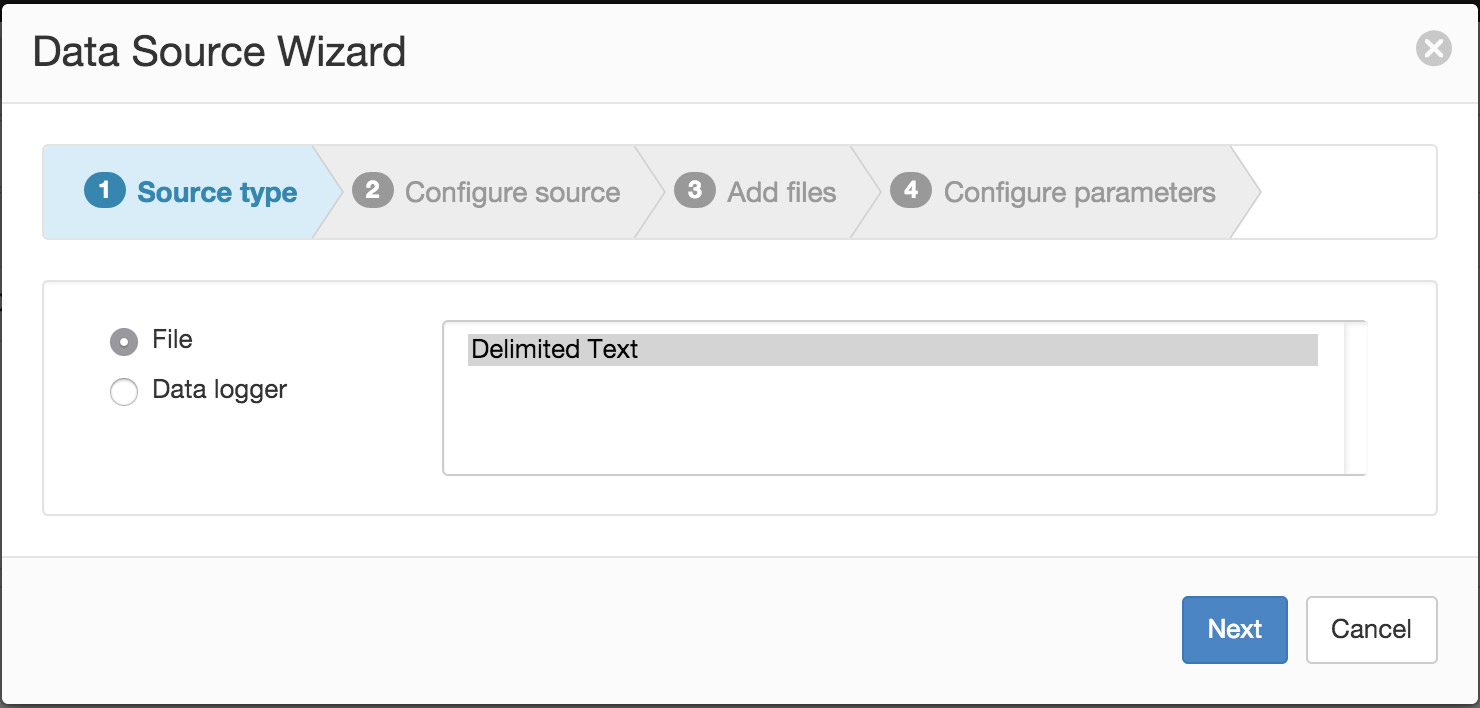
- Select Upload via HTTP as the transport type. A unique URL will be automatically generated per Data Source. Select the Timezone and Ignore Daylight Savings Time options which match the timezone of the corresponding YuDash device. Note that in the following example, the URL ends with the three words moon-soda-calf; these three words will be different for each Data Source that is created.
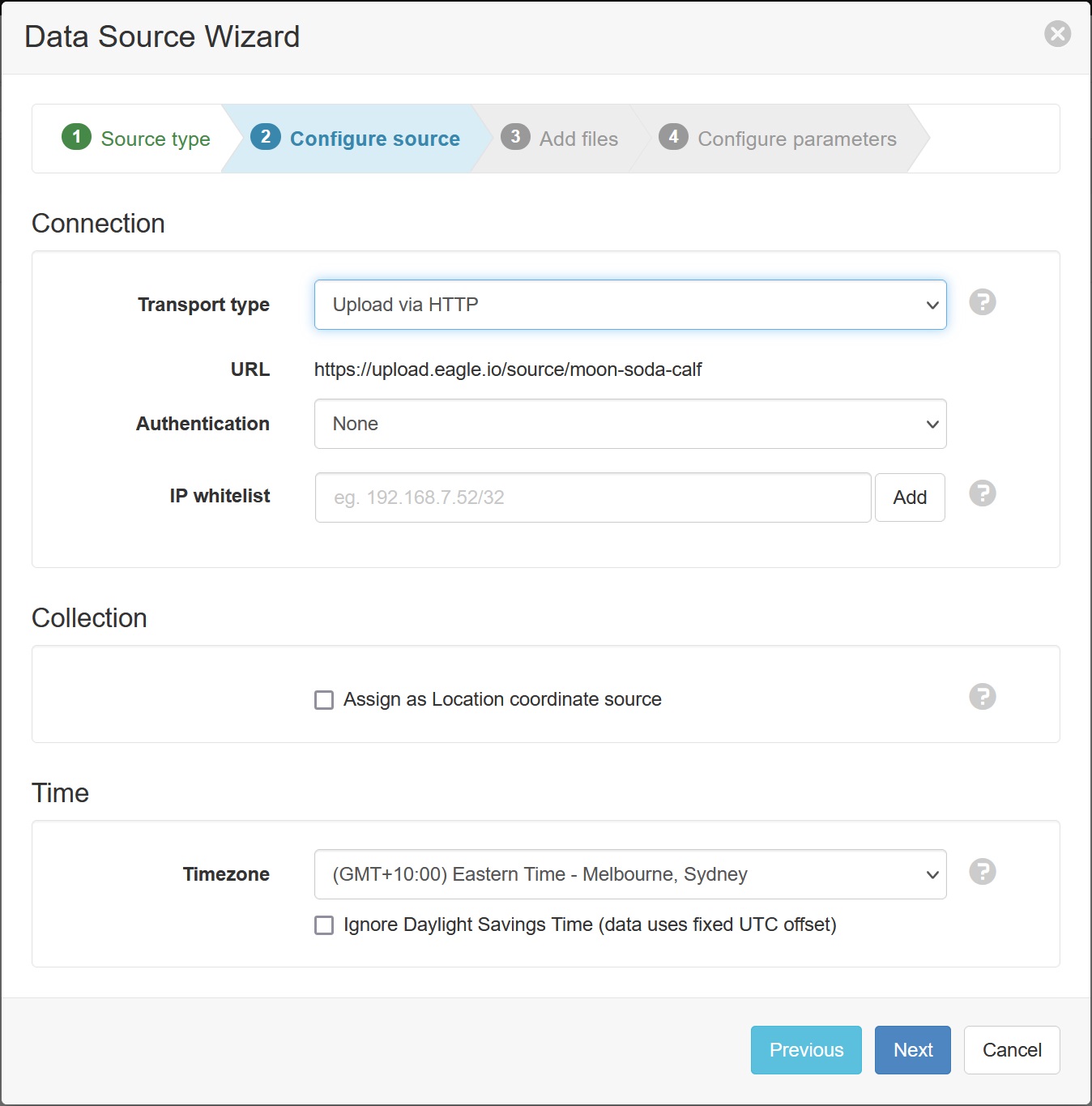
- Click the Browse button and select a text file that contains a sample data format consistent with the data which will be sent by the device. An example data format would be:
2023-02-19 21:20:00,234.5,50.5,3456
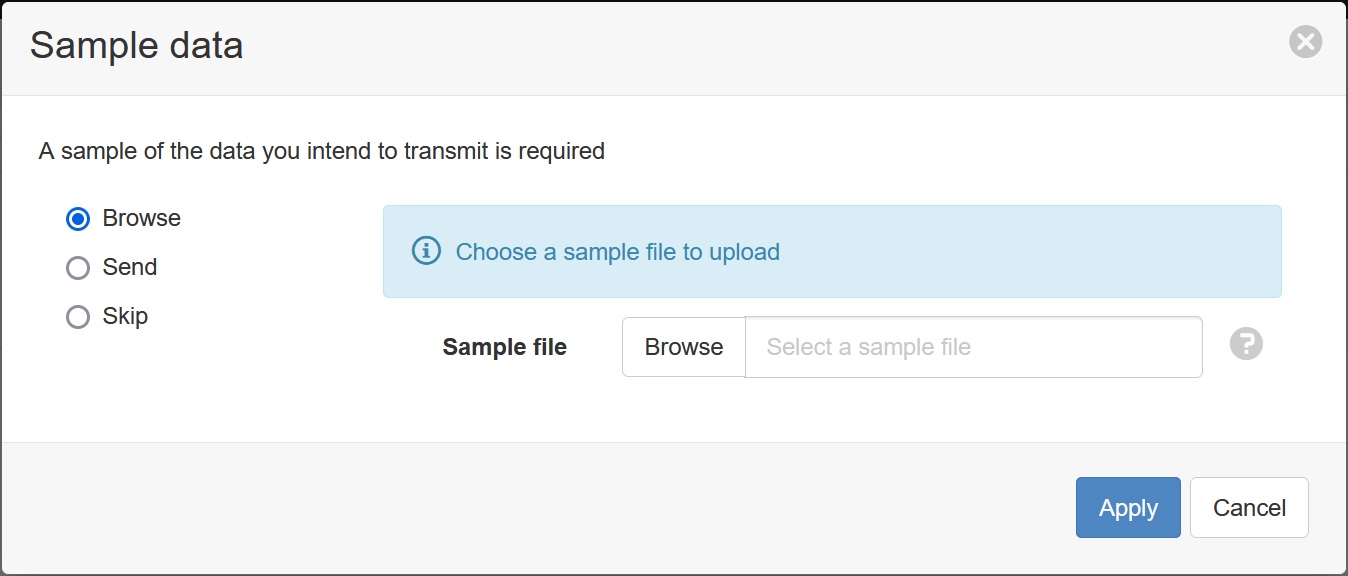
Note
If you do not have a sample text file available, instead select the Skip option and click finish on the next screen. A sample will be saved automatically on the initial upload from the device and you will need to open the Data Source properties dialog and configure the series to create parameters.
- The Parser configuration screen allows the user to describe the structure and format of the data file so it can be correctly interpretted by the system in subsequent uploads. Refer to Text Parser Configuration for full details. Click Apply to Configure parameters.

- Specify the parameter names (and optionally units) for each series/column defined in the Parser configuration. Uncheck any series you do not want to create as parameters. Click Finish to complete the setup.

Device settings¶
- Configure the YuDash HTTP settings to match the unique URL that was previously generated during data source configuration. Because the unique three words in the example URL were moon-soda-calf, the HTTP API name is entered as /source/moon-soda-calf. The other details will remain the same for every eagle.io Data Source that is added.
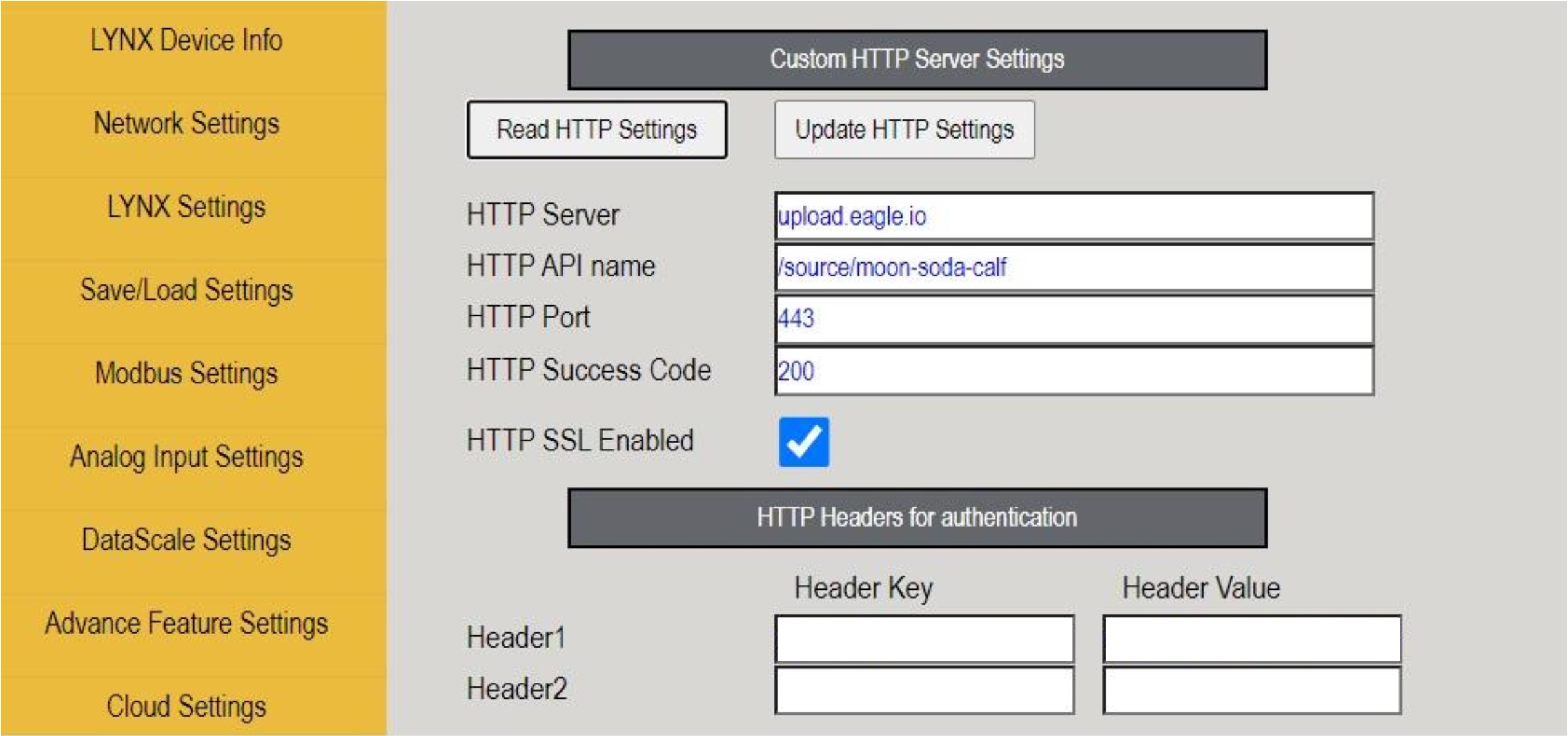
- The Payload Format to send parameters to eagle.io is TEXT_FORMAT_20. The timestamp format is TS_53. This will be inserted in the payload CSV string.

Within payload settings, the YuDash Text Generator Engine is used to generate CSV. The Text Encoder text box is populated to generate required payload.
- ## is a general separator in the Encoder Text.
- yu1_<abc> [name] is a generic place-holder name to access process values.
- Other characters are passed in payload directly.
- yu1_vts is the placeholder for timestamp in selected format.
- yu1_vnv [variable_name] is the placeholder for a named variable; yu1_vnv volt1_in will place the value of voltage volt1_in read by LYNX.

Generic LYNX Settings and Features.
- The variable names (fields) are filled in Modbus settings of LYNX. This is a generic Modbus/RS485 setting of LYNX. Similar to Modbus/RS485; MODBUS/TCPIP, analog inputs and many other protocols can be used.
- In this example, the variable names volt1_in, freq_in and kwhr_in are sent to eagle.io by YuDash LYNX IoT gateway.
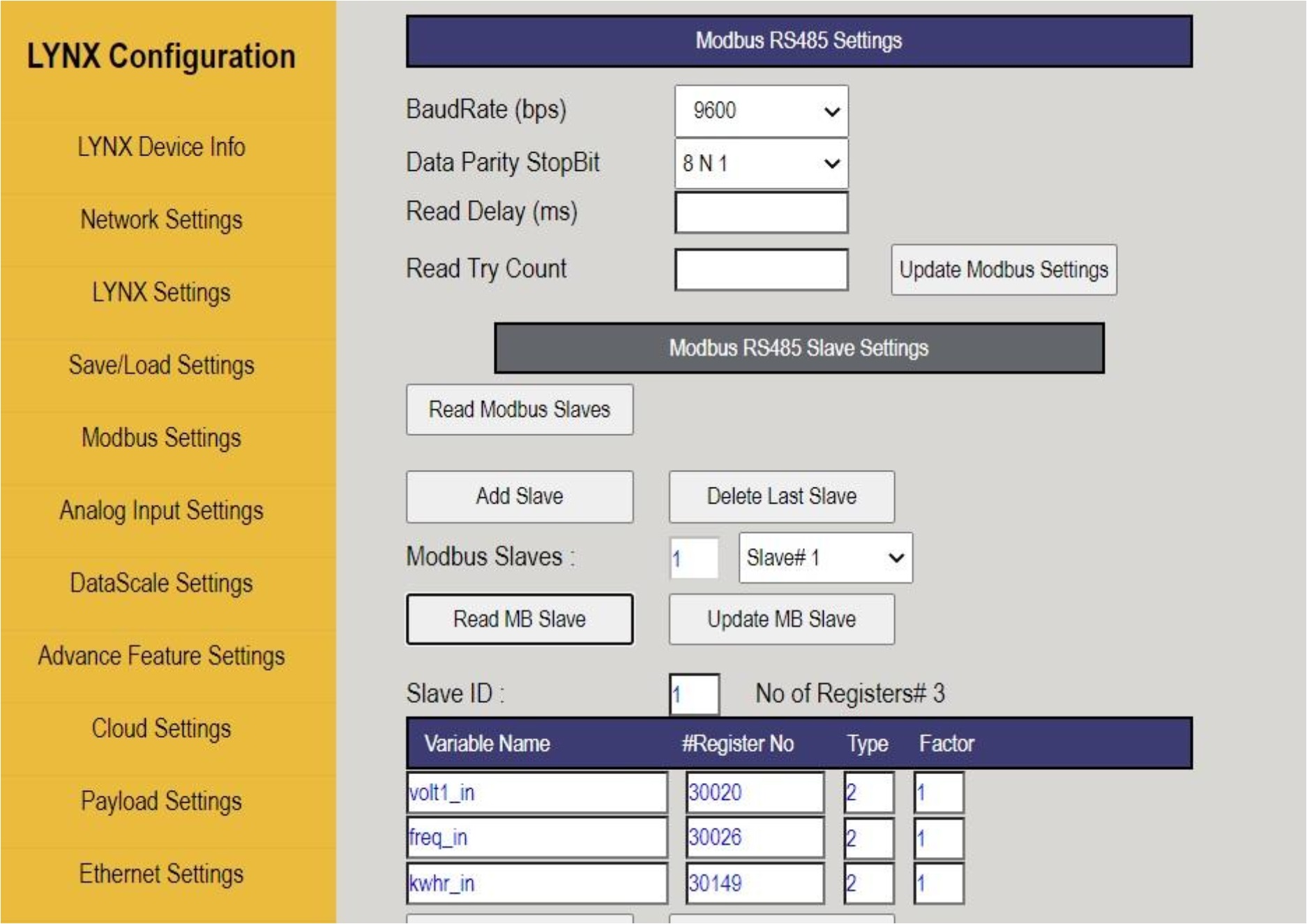
- Select HTTP in the Custom Cloud section to send data to eagle.io.
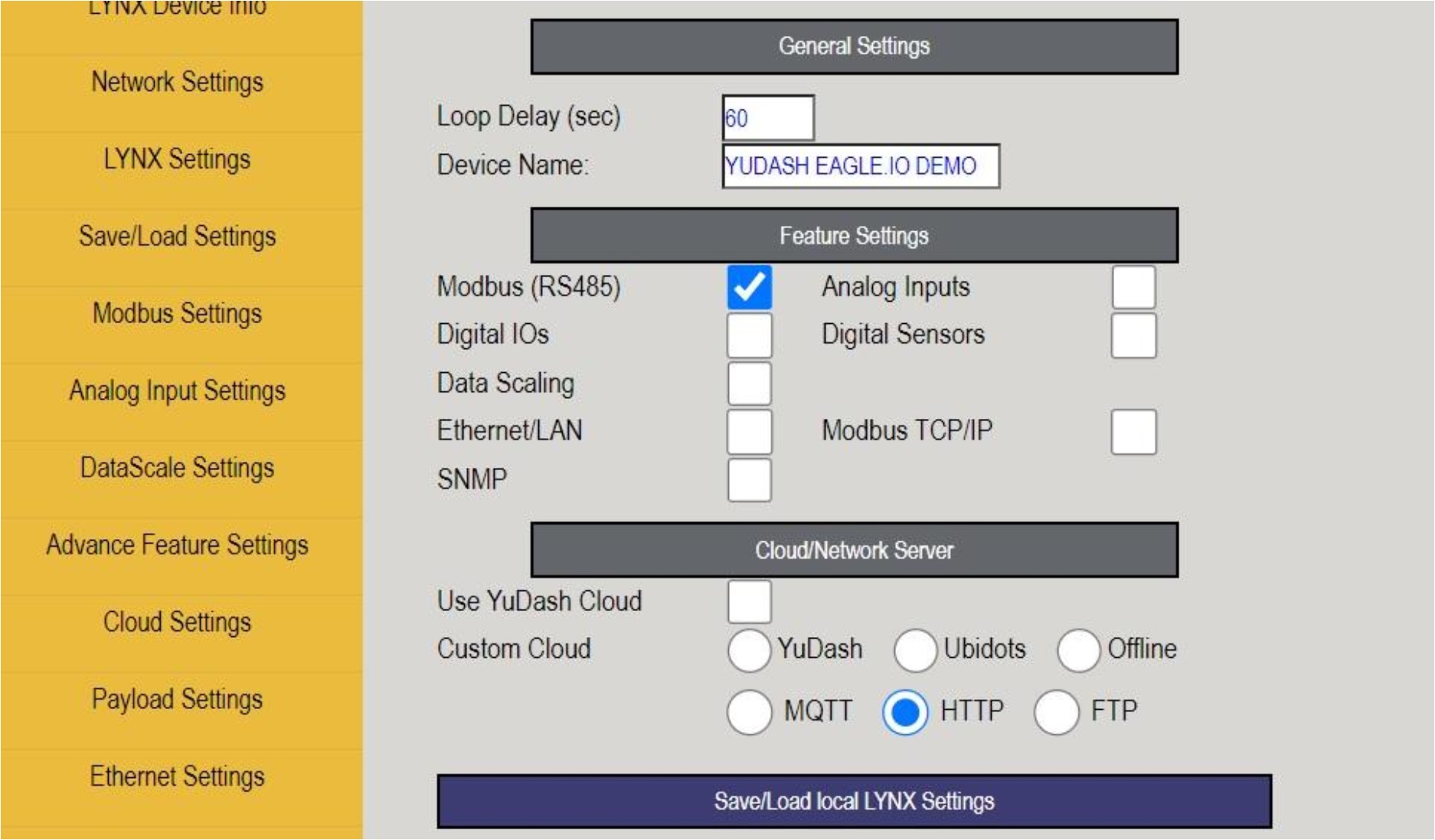
- LYNX has an on-device screen which shows connectivity with eagle.io
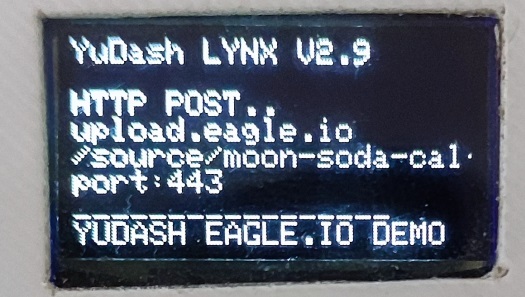
Note
Use the Events view in eagle.io, with the detail level set to Debug, for reviewing communication history and diagnosing data source configuration issues.